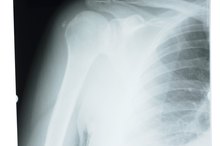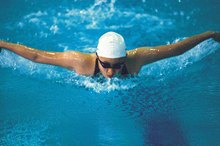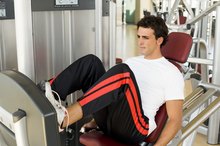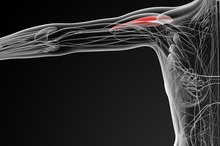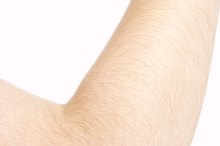Shoulder Pain From Playing Tennis
While you may have heard of tennis elbow, another injury affecting the arm is common: tennis shoulder. If you feel twinges of pain in the shoulder after a tennis session that develops over time, this can be an indicator your tennis shoulder pain is developing into a more serious condition. You can take steps to prevent tennis shoulder pain that do not involve taking yourself away from the court too long.
Shock and Inflammation
Shoulder pain from playing tennis can be traced back to the mechanics of your overhand tennis swing. When you hit a tennis ball overhead, an estimated force of 120 percent of your bodyweight shocks your rotator cuff. While these muscles move the arm and shoulder, the repeated impact can contribute to pain and inflammation in the shoulder joint.
Muscle Imbalance
Knots After a Hard Shoulder Workout
Learn More
Further complicating this is the fact that tennis strokes work the front of your shoulder but don’t necessarily target the back of the shoulder. This muscle imbalance can result in greater pain to your shoulder with each ensuing tennis session. Paul Borsa, an associate professor at the University of Florida who was interviewed in The New York Times, likens the rotator cuff motion in tennis to the brakes of the shoulder. When you hit the ball overhanded and your rotator cuff muscles are underdeveloped, it is like “all acceleration and no brakes,” Borsa says.
- Further complicating this is the fact that tennis strokes work the front of your shoulder but don’t necessarily target the back of the shoulder.
When to Worry
Sometimes a sore shoulder or shoulder pain after tennis will subside with a day’s rest and icing of the affected area. However, sometimes shoulder pain can indicate a more serious condition when it begins to worsen with time or is particularly noticeable the night after a match or practice. Another example of a tennis-related shoulder injury is “dead-arm syndrome,” where the arm is difficult to move or lift. These symptoms may indicate your shoulder injury has gone beyond temporary pain and has developed into a rotator cuff injury such as an impingement or torn rotator cuff muscles.
- Sometimes a sore shoulder or shoulder pain after tennis will subside with a day’s rest and icing of the affected area.
Rotator Cuff Targeting
What Causes Forarm Aches When Cycling?
Learn More
If you do experience initial signs of shoulder pain when playing tennis, you may wish to start performing exercises to strengthen the rotator cuff muscles. Many professional tennis players incorporate rotator cuff training into their toning exercises. Examples include holding a resistance band with your palms facing up and your upper and lower arm at 90 degrees with your elbows tucked in toward your torso. Pulling your wrists away from each other can target the rotator cuff muscles. Another exercise involves lying on your side with a lightweight hand weight -- between 2 and 5 lbs. -- with your upper arm tucked to your torso and your lower arm bent and facing forward. Bringing your hand toward the wall behind you can target the rotator cuff.
- If you do experience initial signs of shoulder pain when playing tennis, you may wish to start performing exercises to strengthen the rotator cuff muscles.
- Bringing your hand toward the wall behind you can target the rotator cuff.
Related Articles
References
- PhysioRoom.com: Top 5 Tennis Injuries
- "The New York Times" Health; Phys Ed: How to Fix a Bad Tennis Shoulder; Gretchen Reynolds; September 2010
- Performance Physical Therapy: Tennis Shoulder
- American Academy of Orthopaedic Surgeons. Rotator cuff tears. Updated March 2017.
- Physiopedia. Rotator cuff.
- Mihata T, Morikura R, Hasegawa A, et al. Partial-thickness rotator cuff tear by itself does not cause shoulder pain or muscle weakness in baseball players. Am J Sports Med. 2019:47(14):3476-3482. doi:10.1177/0363546519878141
- American Academy of Orthopaedic Surgeons. Rotator cuff tears. Updated March 2017.
- Harvard Health Publishing. What to do about rotator cuff tendinitis. Updated May 19, 2019.
Writer Bio
Rachel Nall began writing in 2003. She is a former managing editor for custom health publications, including physician journals. She has written for The Associated Press and "Jezebel," "Charleston," "Chatter" and "Reach" magazines. Nall is currently pursuing her Bachelor of Science in Nursing at the University of Tennessee.


